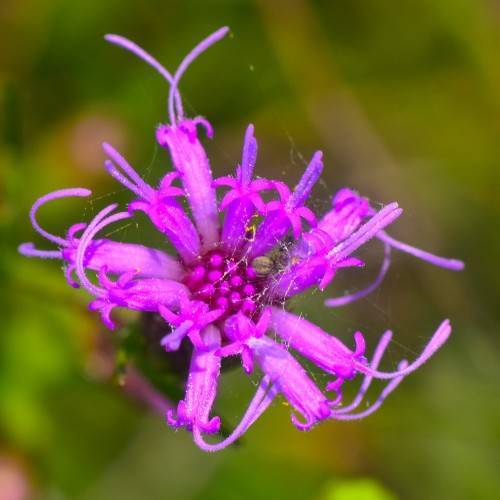
slender blazing star
Liatris cylindracea
Cycle:
Herbaceous Perennial
Watering:
Minimum
Hardiness Zone:
4 - 7
Flowers:
Flowers
Sun:
Full sun
Soil:
Sandy Loamy Rocky
Fruits:
Fruits Ready In Fall
Leaf:
Yes
Growth Rate:
Low
Maintenance:
Low
Drought Tolerant:
Yes
Salt Tolerant:
Yes
Care Level:
Medium
watering
Slender Blazing Star should be watered 1-2 times a week, depending on soil type. The soil should never completely dry out, but also never stay consistently soggy. If possible, use collected rainwater or water from a nearby pond rather than tap water. When watering, avoid getting the foliage wet to minimize the risk of fungal diseases. Water deeply, thoroughly moistening the soil, and let the excess drain away. During summer months in cooler climates, you may need to water more frequently to make up for evaporation. In hot, arid climates, plants may need to be watered more often. In winter, water only rarely, usually leaving the soil dry until spring.
sunlight
Slender blazing star (Liatris cylindracea) grows best in full sun, which means plants should receive at least 6 to 8 hours of direct sunlight each day. During the spring and summer months, the plant should receive 8 to 10 hours of sun. During the cooler fall months, 6 to 8 hours of sun is best. When planted in partial shade, the plant can become leggy and flop over. Additionally, avoid planting the slender blazing star in an area that gets hot afternoon sun as this can be too intense for the plant.
pruning
Slender Blazing Star (Liatris cylindracea) responds best to light pruning in late spring or early summer, after flowering has finished and before the new foliage growth begins. Deadheading, or removal of spent flower stalks, can be beneficial in preventing self-seeding and can help to promote a neater, bushier, and more ornamental habit in the garden. Pruning can also be done to reduce the overall height of the plant if desired. However, be aware that the plant may respond with additional flowering and getting too much taller, so keep pruning to a minimum.
